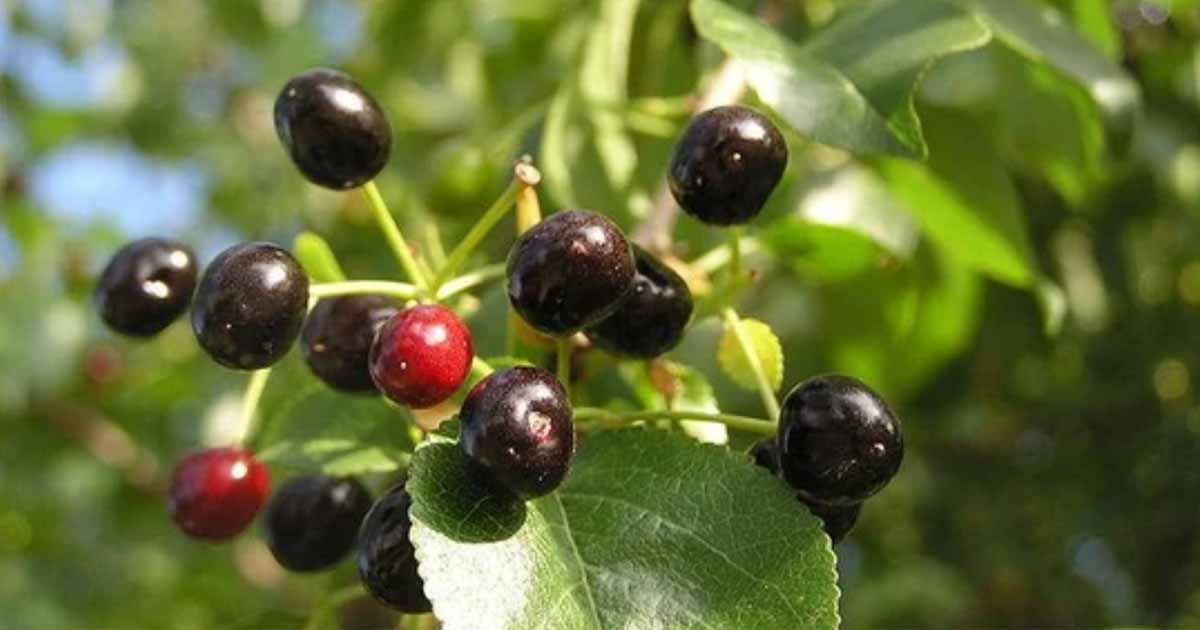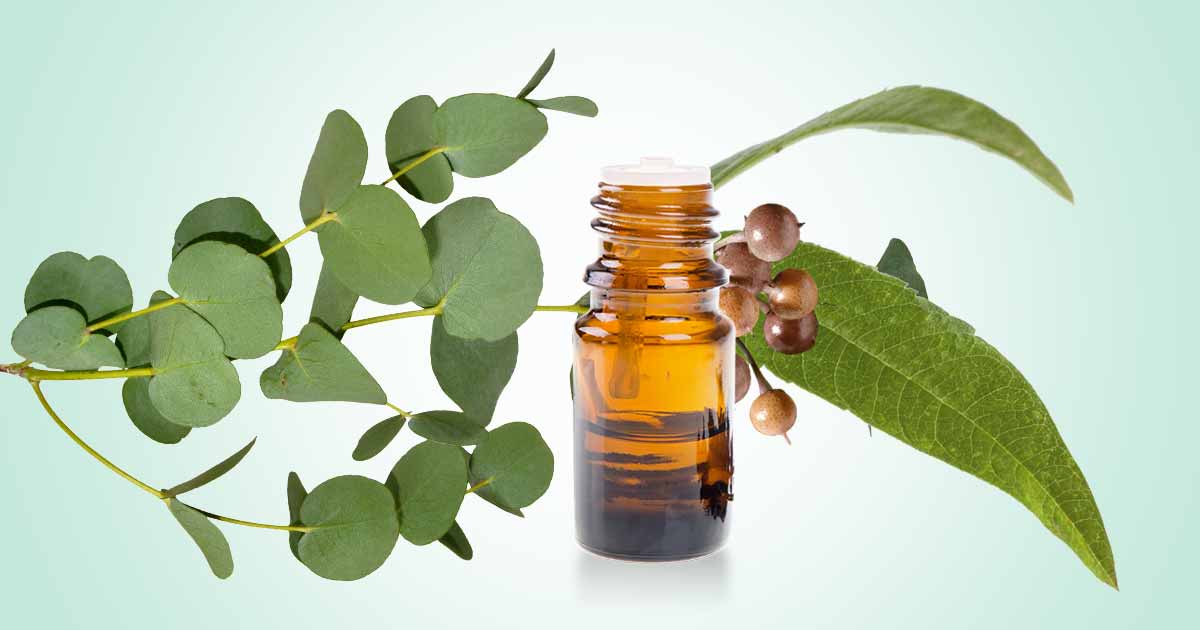Prunus mahaleb, Mahaleb cherry, rock cherry, or St. Lucie cherry is a large shrub to medium-sized deciduous tree of the Rosaceae family. The name of the plant, “mahaleb,” is from the Arabic word for “milk,” which is because of the milk-white color of the flower.
Mahaleb is utilized as both spice and flavoring. It is one of the most expensive spices alongside saffron, vanilla, and green cardamon. It is native to Iran, Central-South Europe and North Africa.
Unlike other Prunus species like plum, cherries, apricot, and almonds, mahaleb cherry has small rounded leaves with teeth having tiny glands at their tips. The leaves are alternate, simple, green colored, small and almost round.
Prunus mahaleb can grow up to 5 to 10 m height. The inflorescence are racemes with few flowers. Flowers are white, fragrant, and small. Flowering occurs in mid-spring.
The fruit of Prunus mahaleb is a small thin-fleshed cherry-like drupe, which is green at first, but turns to red then dark purple to black when it is mature. It has a bitter flavor, but pleasant taste. Fruiting occurs in mid to late summer. A smooth woody stone contains the seeds. The seeds taste like almonds.
Prunus mahaleb grows well in forest edges, moist forests, river banks, roadside, meadows, and fields.
In processing the plant, the fruit is dried, and crushed. The seeds are removed from the shell using conventional sieves.
In traditional medicine, Prunus mahaleb is used to treat kidney stone, gastrointestinal issues, diarrhea, diabetes, prostatic hyperplasia, as aphrodisiac, expectorant, immune booster, and diuretic.
Additionally, the seeds are used to bake bread, and in the food industry. The fruit is used to prepare alcoholic beverage used as appetizer in the Mediterranean. In the Middle East and North Africa, the seed is aromatic and is used to flavor bread, cakes, cheese, cookies.
The spice from Prunus mahaleb is called Mahleb or Mahlepi. It is gotten from the cracking of the cherry stones to extract the seed kernel. The seed kernels are ground to powder and used.
Constituents
Mahaleb contains protein, carbohydrates, fixed oils, vitamins, lycopin, carotenoids, polyphenols, anthocyanins, cyaniding 3-glycosides, O-coumaric acids, and quercetin derivatives. There are trace minerals such as iron, copper, and zinc.
The seed of Prunus mahaleb contains fatty unsaturated glycoside-free compound like coumarins, such as herniarin and dihydrocoumarinsalicylic acid, flavonoids, tannins, amygdalin, cyanogenic glycosides, and tannins.
Seed oil has a high level of poly-unsaturated fatty acids, mostly the α-eleostearic acid, a conjugated fatty acid rarely found in vegetable oils.
The volatile constituents include organic acids, aldehydes, alcohols, esters, furans, ketones, lactones, aliphatic hydrocarbons, aromatics, and terpenes
- Organic acids: Succinic, γ-hydroxybutyric, oxalic, malic, and glycolic acids.
- Inorganic acids: phosphoric acids
- Phenolic compounds: thymol-β-glucopyranoside
- Fatty acids: myristic, oleic, linoleic, palmitic, arachidic, stearic, and α-Linolenic acids.
- Sterols: Stigmast-5-ene
- Alcohols: glycerol
- Amino acids: alanine, proline, glutamic acid, and pyroglutamic acids.
Medicinal Benefits of Prunus mahaleb
Mahaleb has antioxidant, antimicrobial, anti-inflammatory, anticancer activities.
Antioxidant effect:
Prunus mahaleb seed and kernel contains antioxidant compounds such as gallic acid, ursolic acid, and flavonoids. These compounds prevent free radical formation, lipid peroxidation and inflammatory diseases.
Treatment of kidney stone:
There are types of kidney stones such as calcium oxalate stone, and others caused by calcium phosphate, uric acid, struvite, cysteine, and rarely by xanthine.
In a study by Fatemeh Akbari, PharmD et al. 2020, using rat induced with urolithiasis with ethylene glycol and ammonium chloride, Prunus mahaleb seed extract reduced the renal stone and improved renal function.
It reduced the serum levels of urea, uric acid, creatinine, oxalates, calcium, and phosphorus. This property of the plant could be due to antioxidant compounds such as phenol and flavonoids.
Anticancer property:
The seed extract shows a dose-dependent inhibitory activity against melanoma cells, but no growth inhibition of healthy L929 and HeLa cancer cells.
Antimicrobial activity:
Prunus mahaleb ethanolic extract shows antibacterial activity against P. mirabilis, B. anthracis and S. aureus (S.M. Seyyednejad et al., 2008). It also inhibits A. baumannii, P. aeruginosa, E. coli, and E. faecalis.
As an antifungal compound, it inhibits C. krusei, but not C. albicans, C. parapsilosis, or C. tropicalis.
Anti-tyrosinase activity:
Ursolic acid and gallic acids present in mahaleb shows a strong tyrosinase inhibition activity
Anti-inflammatory effect:
The wood, bark and seeds extracts of mahaleb contain coumarins, a compound with anti-inflammatory activity. It also has sedative and vasodilatory activities.
Ovicidal activity:
Mahaleb seed oil has ovicidal activity against cotton leafworm, Spodoptera littoralis.
Side Effects
Plants from the Prunus genus, which contain amygdalin and prunasin, compounds which break down in water to form hydrocyanic acid (cyanide or prussic acid).
The compounds are found in the leaves, and seeds, and are detected by the bitter taste. In small quantity, the hydrogen cyanide could be beneficial in cancer, may stimulate respiration and improve digestion. However, at higher doses, it may cause respiratory failure and even death.
References
- https://gobotany.nativeplanttrust.org/species/prunus/mahaleb/
- https://www.ncbi.nlm.nih.gov/pmc/articles/PMC7071555/
- http://www.misin.msu.edu/facts/detail/?project=misin&id=259&cname=Perfumed+cherry
- https://pfaf.org/User/Plant.aspx?LatinName=Prunus+mahaleb
- https://www.sciencedirect.com/science/article/abs/pii/S2212429222002632
- https://ies-ows.jrc.ec.europa.eu/efdac/download/Atlas/pdf/Prunus_mahaleb.pdf
- https://scialert.net/abstract/?doi=ajbs.2008.51.55
- https://www.researchgate.net/publication/286396874_Evaluation_of_the_in_vitro_bioactivities_of_Mahaleb_Cherry_Prunus_mahaleb_L












